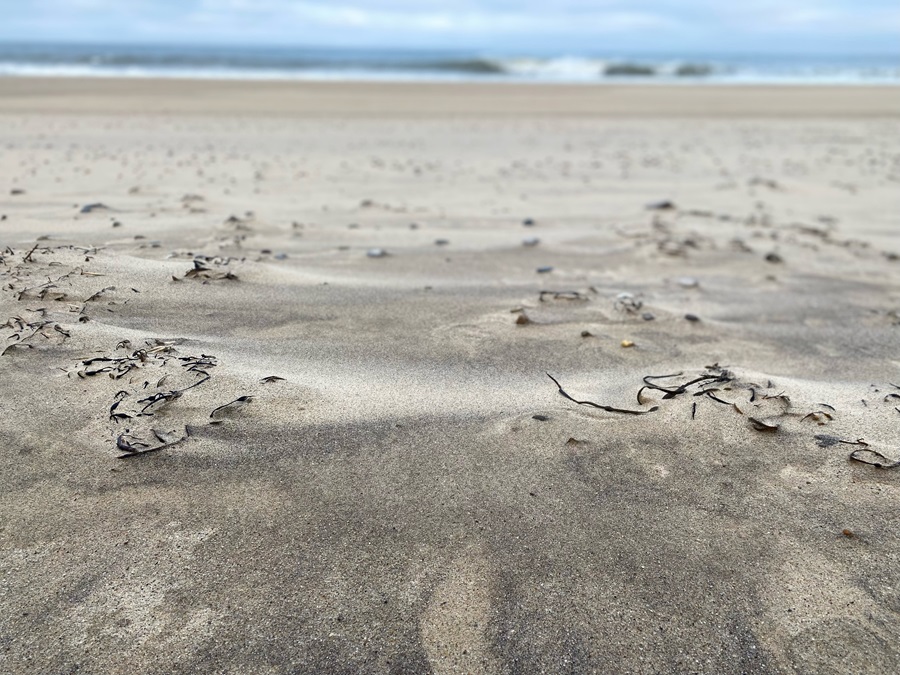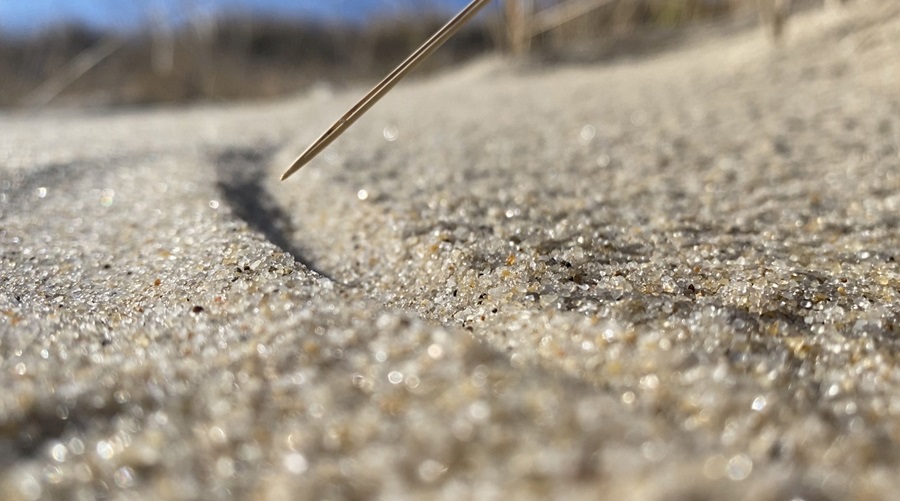Something about the beach felt different that morning. The feeling was quiet but persistent — a background sound humming below louder thoughts. I’d walked an eighth of a mile before it rose to the surface, though my subconscious mind must have found it right away. Then I saw it: There was not a single footprint on the sand. The beach was new.
No one had been here since the night tide had slipped up over the foreshore, covered the winter beach to the edge of the dune, smoothed every divot and print, and left a shadowless sandy plain. The wrack line was nestled tight to the dune bottom, evidence of the high-water mark, winding away to a distant vanishing point where the ocean, beach, dune, and sky met.

“Want to see something no one has ever seen before?” asks the woman in my memory. We stand in my father’s kitchen, my chin just a few inches higher than the countertop. She holds the orange against a cutting board, draws a sharp knife clean through its center, holds its now two separate halves in place, turns her head away, and lets the orange fall open.
It is in that way that the beach draws me back, still curious, day after day. It is a place where the constant shifting of the world is made clear. In the moment it takes to draw and let go of a single breath, the beach is not the same place it was when that breath began. Over and over again it offers something your eyes are the first to see.
On a windy day, sand blows like snow dust in drifts given life by the wind, stinging your calves and ankles. The sand bounces and tumbles in its saltation, reshaping the surface of the beach: the top layer is peeled off and blown to form a new top layer downwind; one beach becomes another.

On days when the wind is gentle, the light moves steadily across the beach, and shadows flow like syrup into footprints. Sand slides down the dune, trickles through narrow chutes, and piles up again at the bottom in hourglass shapes. The tide rises, not in jumps of inches and feet, but steady, fluid, and constant. The tips of blades of beach grass turn in lazy swoops, drawing patient circles in the sand. I lay one day with my chin on the sand and watched this for a long while. The tips of the grass moved in sleepy, rhythmic arcs, gently brushing the warm sand. I realized I’d seen this motion before: two people falling into a nap together, the hand of one resting on the arm of the other, a sleepy finger drawing the same gentle arc on soft skin.
“Change is constant.” We hear this said. We know it to be true. We nod our heads and say, “Of course it is.” But can we really hold that idea properly in our minds? It is too big to fully grasp, too enormous to carry around all day. Our brains, in an effort to conserve energy, have to make it into an abstraction. Of course I know that every detail of the world around me is in a constant state of flux. Of course I know the sun is a giant ball of exploding gas.
Walking the beach, I know that all things are in a state of change, and that I, too, am a thing in motion. All the elements of my life that appear fixed are in fact fleeting. This goes for all the challenges and for the things I hold dear. The beach reminds me that the challenges will pass. And as for the things I love, I must give them my attention and presence. It allows me to comprehend with my very own senses that every moment is new and to hold that thought in my mind and know it is true.



